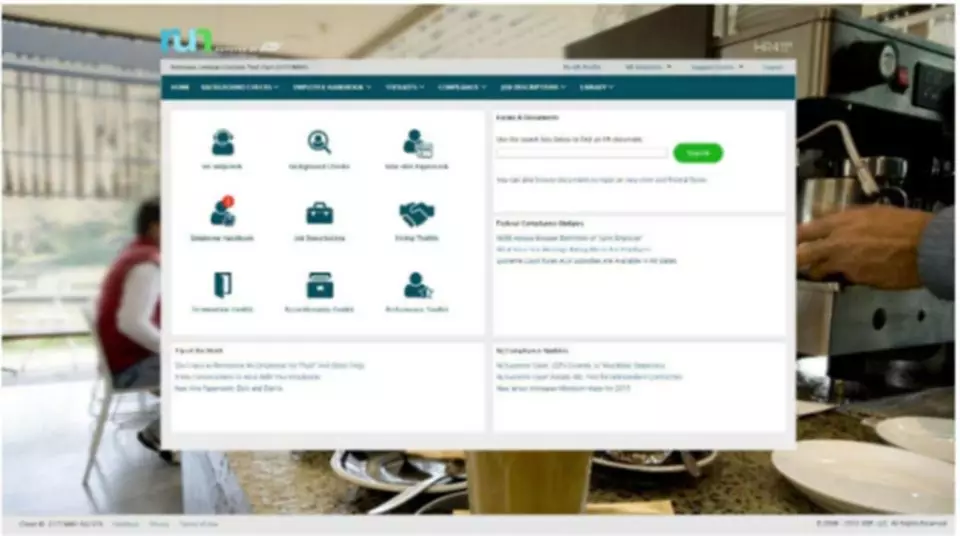Content

An important part of business finance and cash flow is making sure you understand how much of your available funds you can afford to place in reserve for the encumbrance account. Your reserve funds should be treated as if they don’t exist, and only dipped into for approved purchases or expenses. Though it may be tempting to leave extra money in the general fund to pull from whenever something comes up, doing so could easily over-extend your budget and place serious constraints on your cash flow. When you do not enable the budgetary control flag, you can still enter manual encumbrances via journal entry, but you cannot generate encumbrances from requisitions and purchase orders.
- An encumbrance can also restrict the uses to which property can be put, such as zoning laws that limit the types of construction on a plot of land.
- Other encumbrances, such as zoning laws and environmental regulations, do not affect a property’s marketability but do prohibit specific uses for and improvements to the land.
- When you do not enable the budgetary control flag, you can still enter manual encumbrances via journal entry, but you cannot generate encumbrances from requisitions and purchase orders.
- A negative easement restricts the title-holder, for example, by preventing them from building a structure that would block a neighbor’s light.
But, if the encumbrance amount has to be altered for any reason, that will either increase or decrease the appropriations account. You can review the cumulative funds available total only by selecting Year-to-Date Extended (or Project-to-Date) as the amount type. For example, if you budget $100 for January, spend $50 and have $10 in encumbrances, the funds available for January is $40. If you view funds available for the amount type PTD for February, the February balances will not include the $40 available at the end of January. When you choose an amount type of YTDE, you can view cumulative amounts so the February balances will include the $40 available for January. A tax lien is a lien imposed by a government to force the payment of taxes; in the U.S., a federal tax lien trumps all other claims on a debtor’s assets.
Example Question #2 : Encumbrance Accounting
For example, a company may reserve a sum of cash to settle up its accounts payable. The presence of an encumbrance can give the illusion that there are more available funds inside an account than what is actually free for use. The money that has been set aside cannot be used for any other expenditures or transactions. Encumbrance accounting, therefore, ensures that a business does not overspend its budget. The companies track and analyze differences as favorable and unfavorable variances.
What does encumbered mean in assets?
Encumbered assets: Encumbered assets are assets that the bank is restricted or prevented from liquidating, selling, transferring or assigning due to legal, regulatory, contractual or other limitations.
By tracking these expenses, it helps ensure that the company does not exceed its budget and reduces the chances of fraud or errors. Encumbrance Accounting Journal Entries also make it easier for companies to adhere to legal regulations relating to financial reporting and auditing. Encumbrance data enables budgetary control, letting your company better understand where they are financially at any given time. Since the money that the company will spend later is tracked, a company can keep from overspending. By making visible the amount of money you plan on spending in the future, you can more accurately see how much money you can spend on future projects or purchases without going over budget.
Terminologies used in Encumbrance Accounting
If you have partial read access to the balancing segment values or management segment values, you can only view journal lines that you have read access to. To use the full capabilities of encumbrance accounting, you must enable the budgetary control flag for a ledger. When you enable the budgetary control flag, the system automatically creates encumbrances from requisitions, purchase orders and other transactions originating in feeder systems such as Purchasing and Payables. Although an encumbrance may appear as part of a company budget, the actual spending may still have to go through an approval process.

An encumbrance can prohibit students from registering for classes, affect the release of their transcripts, or delay the reception of their diplomas. A negative easement restricts the title-holder, for example, by preventing them from building a structure that would block a neighbor’s light. It is important, from the buyer’s perspective, to be aware of any encumbrances on a property, since these will often transfer to them along with ownership of the property. An easement refers to a party’s right to use or improve portions of another party’s property, or to prevent the owner from using or improving the property in certain ways. For example, a utility company may have the right to run a gas line through a person’s property, or pedestrians might have the right to use a footpath passing through that property.
The encumbrance accounting process
Routable provides a complete audit trail to help lower fraud and compliance risk and helps increase visibility through this thorough tracking. We also allow you to process your invoices and payments your way, whether that means email, scanning, or automatically https://www.bookstime.com/articles/what-is-encumbrance-accounting forwarding bills from your email. Routable wants to enable you to grow into the future, which is why we have a sophisticated API for any bulk processing. By carefully and accurately tracking your encumbrance amounts, you also increase spending visibility.
Encumbrances can also be used to predict cash outflow and as a general planning tool. The purpose and main benefit of encumbrance accounting is avoiding budget overspending, by showing open commitments as part of projected expenses. Encumbrances are important in determining how much funds are available as a projected expense planning tool. During the initial pre-encumbrance phase, someone submits a request to reserve money for a future payment.
Business is Our Business
As a result, organizations can track their expenditures against the allocated budget more effectively. Then, the procuring company converts the encumbrance into an expenditure by transferring the transacted items from the encumbrance account into accounts payable. Typically, there are two ways of using encumbrances to monitor overspending. One way is to look for over-expenditures in reports generated after posting actuals and encumbrances.

A mechanic’s lien is a claim on personal or real property the claimant has performed services on. An example is if a contractor made adjustments to your property that were never paid for. The term encumbrance covers a wide range of financial and non-financial claims on a property by parties other than the title-holder. Property owners may be encumbered some from exercising full—that is, unencumbered—control over their property. In some cases, the property can be repossessed by a creditor or seized by a government.
What is Encumbrance Accounting?
If management approves, the IT department writes the purchase order, which creates the encumbrance. Requisition encumbrances are automatically relieved when requisitions become purchase orders. You can review your posted or unposted encumbrance journal batches, such as those created manually or those imported from Payables or Purchasing.
Form DEFM14A IVERIC bio, Inc. – StreetInsider.com
Form DEFM14A IVERIC bio, Inc..
Posted: Mon, 05 Jun 2023 12:57:44 GMT [source]
Open encumbrances record the amount to be reserved from the unencumbered balance that is remaining to honor the commitments. Encumbrance accounting should not be confused with the term encumbrance in real estate. A property becomes encumbered once it has a lien on it, or when there are zoning restrictions. You can execute year-end carry forward a number of times for different ranges of accounts and different encumbrance types. They may be financial (for example, liens) or non-financial (for example, easements, private restrictions). Because users of the road must pay a fee, the road is accounted for as an enterprise fund.
Accounting
In management accounting, encumbrance is a management tool used to reflect commitments in the accounting system and attempt to prevent overspending. Encumbrances allow organizations to recognize future commitments of resources prior to an actual expenditure. https://www.bookstime.com/ Journal Entries are used to track the estimated liabilities and expenditures of a company in order to maintain accurate financial records. The entries record any commitments that have been made but not yet paid for, such as contractual obligations and purchase orders.
- This type of accounting also helps detect fraud, prevent rampant spending, and increases budget control.
- Encumbrances allow organizations to recognize future commitments of resources prior to an actual expenditure.
- As the company rolls through the budgeted year, the amount actually spent rises and the encumbered funds declines.
- Bill and Jim were extremely helpful keeping us on target and requesting any missing information that we were able to fully onboard in 2 months and begin running parallel systems.
- An available appropriation represents the amount of the appropriation that can still be obligated or spent within the availability period allow in the Budget Act.
- There might be a provision that requires the buyer to leave a building’s original facade intact, for example.
In other words, the purchasing company makes a promise to pay before the expense is incurred. Encumbrances are also known as pre-expenditures since they act as budgeted reserve funds before the actual expenditure. A purchase order encumbrance, which is recorded as 83XXXX, is increased when a purchase order is created and is decreased or reversed when an invoice is matched to the purchase order. An accounts payable encumbrance, which is recorded as 03XXXX, is increased when an invoice is entered and is decreased or reversed when an invoice is paid. The encumbrance accounting rules may be used to record adjustments and make corrections to the encumbrance accounts and the reserve for encumbrance accounts.
